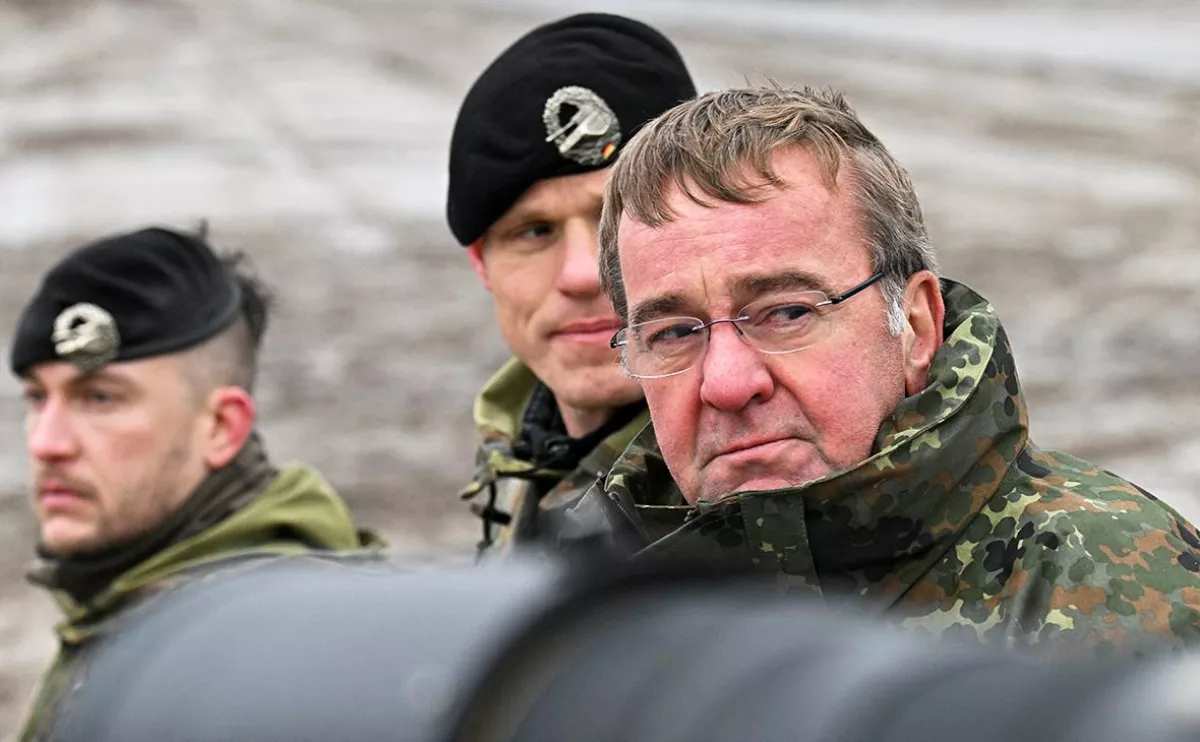NATO vs Russia: Who will strike first? Expert opinions on Caliber.Az
A conflict between NATO and Russia could occur within the next few years, possibly as early as 2029, German Defence Minister Boris Pistorius told Frankfurter Allgemeine Zeitung.

“We have always said that it could happen in 2029. However, now some claim it could already occur in 2028, and some military historians even believe we have experienced the last peaceful summer,” he said.
Pistorius emphasised that NATO forces must strengthen their preparedness.
He also outlined what a NATO–Russia war might look like. While drones have been decisive in Ukraine, he warned that in a direct confrontation, heavy equipment and personnel would be the central focus.
Earlier, German Lieutenant General Alexander Sollfrank, head of Germany’s Joint Operations Command, stated that Russia could attack NATO countries “as soon as tomorrow.” He emphasised that such a decision would depend on three factors: Russia’s military power, the combat experience of its army, and the stance of Western allies.
Meanwhile, the Kremlin continues to insist that Russia poses no threat to anyone, while warning that it will not ignore actions that could potentially endanger its interests.
How should these forecasts be interpreted? How likely is it that a war between NATO and Russia could erupt as early as next year? What reasons or events might push the parties toward conflict?
Caliber.Az asked prominent foreign analysts to answer these questions.

German political scientist Alexander Rahr, professor at the Institute of International Politics WeltTrends (Potsdam), believes there are several reasons that could lead to a direct military clash between Russia and Germany.
“First, Russia may seek to retaliate against Germany for supplying lethal weapons to Ukraine. If German Taurus missiles appear in Ukraine and are launched at civilian targets, Russia could strike military facilities on German territory.
A military escalation in the Baltic Sea is also possible—if Germany attempts by force to block the route of a third-country tanker carrying Russian oil.
It cannot be completely ruled out that, in the event of the Ukrainian Armed Forces’ collapse in the Donetsk region, Germany, together with other NATO countries, might consider it necessary to send its troops to the banks of the Dnipro River to prevent, under any circumstances, a Russian breakthrough into central Ukraine,” the professor outlined.
He noted that, judging by the statements of the German Defence Minister and the senior military leadership, the German authorities effectively see the country as being in a pre-war state of conflict with Russia.
“The situation is aggravated not only by the hostile rhetoric of German and Russian politicians. Germany is taking on the role of Europe’s main defender (replacing the U.S.). Germany wants to determine the future security architecture for Europe—a Europe in which, according to Berlin, Russia has no place. Naturally, Russia will not allow itself to be pushed out of Europe. Serious battles lie ahead. It is not impossible that Russia and Germany could soon move toward breaking diplomatic relations and denouncing the 4+2 Treaty (which defined the reunification of the two Germanys in 1990). Such a development could bring the two powers closer to a real war—nuclear war—which Russia fully understands, while Germany refuses to acknowledge,” Rahr stated.

Military analyst and former Ukrainian Security Service officer (2004–2015) Ivan Stupak said that just a couple of weeks ago he spoke with German colleagues involved in military policy.
“They say the following: for us Germans to be ready for a potential overt Russian threat, we need at least two years. That’s the minimum. In the best-case scenario—5 to 7 years. But no less than two, because our defence industry is not ready, our society is not ready, and, in general, nothing is ready—everything is very, very raw. So, these are the time frames needed. That’s one component.
Second: Russian Chief of the General Staff Valery Gerasimov has repeatedly cited in his scholarly works the Soviet military theorist Georgy Isserson, who said: ‘Wars are not announced; wars are started.’ That is, there is no declaration of war—the war begins immediately, without any preliminaries. Everything we are seeing in Europe now—hybrid attacks, nonlinear operations, asymmetric strikes, drones, explosions, arson, small-scale sabotage—this is already the start of a war. It is already war. For some reason, in Europe it is believed that war only happens when artillery fires, planes fly, and missiles are launched. No. Everything we observe today is already war, just using different methods. And here, two major scenarios are present,” the expert noted.
According to him, there is indeed a threat that the Russian Federation could launch a full-scale war against one of the European countries, a specific region—such as Estonia or Lithuania—or carry out an operation in the Baltic Sea.
“This is all realistic. But we fully understand that Russia’s main resources are currently tied up in Ukraine. There are no extra resources, no extra personnel. According to the Ukrainian General Staff, 712,000 Russian servicemen are directly in Ukraine or around it. That’s a huge number. And Russia’s entire military-industrial complex is focused on the Ukrainian front. And we all know the classic saying: the best way to lose a war is to fight on two fronts. I believe that, judging by the current situation, the Kremlin is avoiding this for now.
Although Russian war correspondents are stirring public opinion and suggesting that such an opportunity supposedly exists: while Europe is weak, while the Western world is weak, it must be seized, because in two years it will be stronger. In other words, the ‘iron must be forged’ right now. And this is the threatening factor.
But in my view, the biggest threat is not even a full‑scale invasion. It is 200–300 ‘Girkin‑style’ gunmen landing, for example, in the city of Narva in Estonia. At the same time, Russia’s electronic warfare and jamming systems are operating intensively. There are three key EW locations—Saint Petersburg, Kaliningrad and the Narva area. The city becomes paralysed, cut off from communications. These 200–300 men seize the post office, telephone exchange, telegraph, the mayor’s office, the city council, arrest the mayor, proclaim the creation of the ‘Narva People’s Republic’ and appeal to Putin: send in the troops.
This is essentially the same scenario used in Crimea in 2014 and in Donetsk the same year. And then Putin sends in the troops—and that’s it, the city is cut off. Who in Europe will fight to reclaim it? No one. The Italians, the French, the Germans, the Portuguese are not going to go to war over the city of Narva. And that alone would be enough to shatter all European unity,” Stupak believes.








